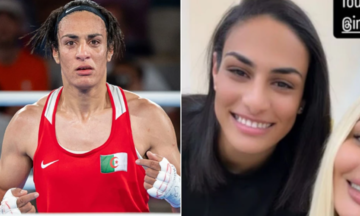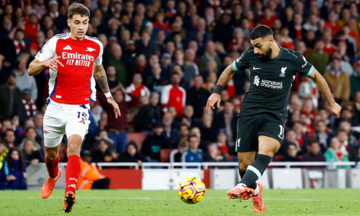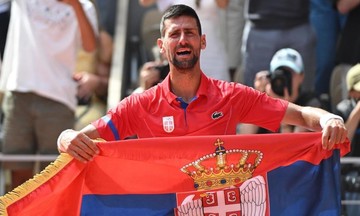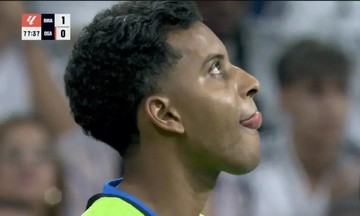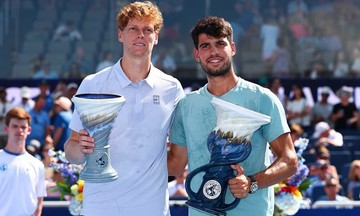The Sinner-Alcaraz rivalry is increasingly compelling, dramatic, and unpredictable, promising exciting future developments. It evokes the same feeling fans experienced during the "Big 3" era.
The rivalry among Roger Federer, Rafael Nadal, and Novak Djokovic inspired each of them to utilize the time between Grand Slams to refine their skills, probe their opponents' weaknesses, and address their own shortcomings. It was a journey of continuous "evolution" and self-improvement, showcasing the pure beauty, as well as the fierce and intense competition, that this sport can generate.
Currently, Sinner appears to be the more well-rounded player compared to Alcaraz. The Italian player recently lost to Grigor Dimitrov in the fourth round of Wimbledon and was almost certain to lose if his opponent hadn't suffered an injury. But since then, Sinner has improved his form, especially in the final against Alcaraz. It was a match where Sinner had the upper hand in most aspects, similar to their Roland Garros encounter, until he missed three championship points and allowed Alcaraz an improbable comeback after five epic sets.
Avoiding a repeat of the Paris loss, Sinner ended his rival's dominance at Wimbledon. But Alcaraz certainly isn't resting. He and his team are already planning for a rematch, if it happens, on 7/9, the date of the US Open final.
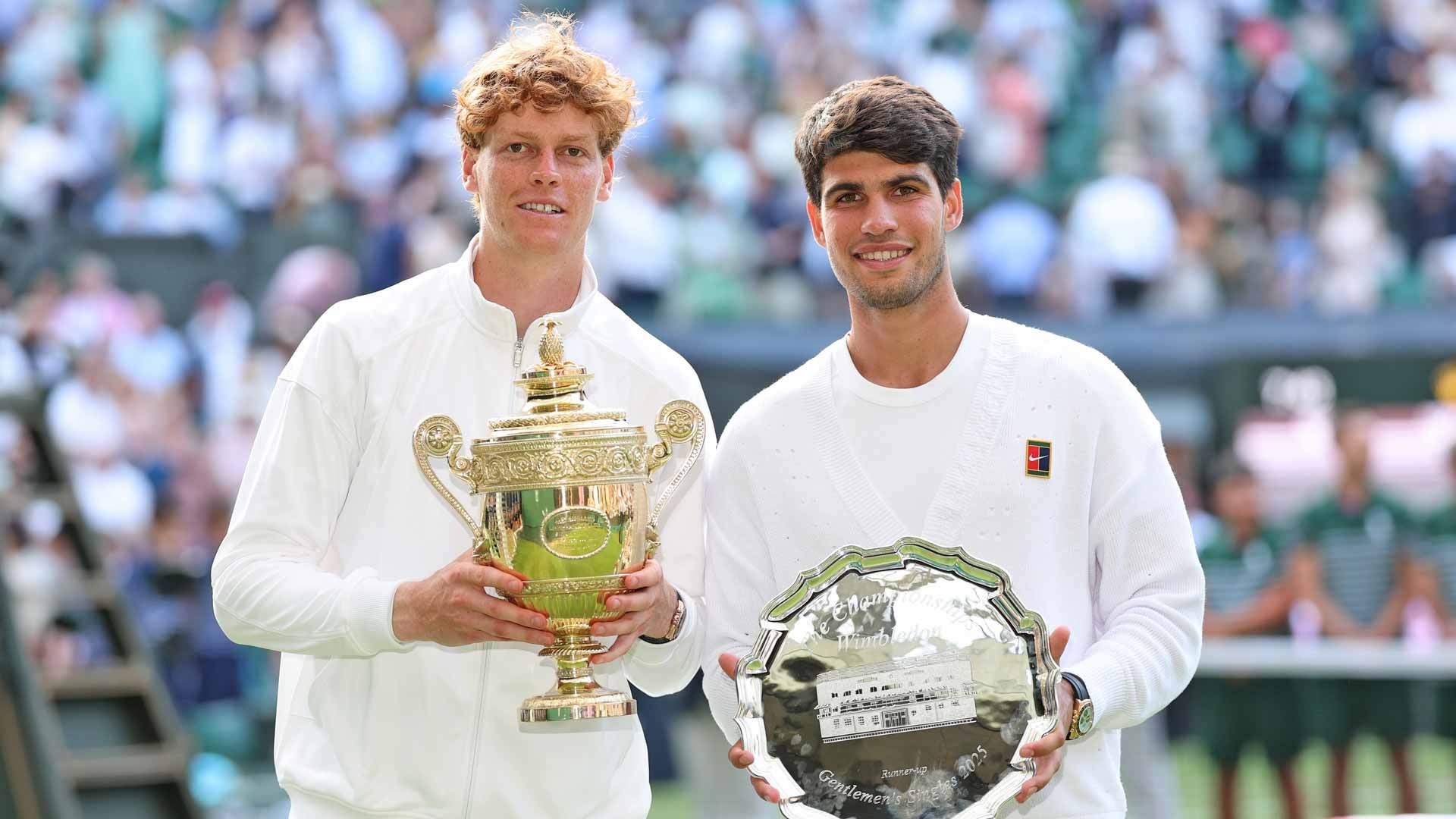 |
Alcaraz (right) and Sinner, after receiving their awards at the Wimbledon final, on Centre Court at the All England Club, London, England on 13/7. Photo: Reuters |
Alcaraz (right) and Sinner, after receiving their awards at the Wimbledon final, on Centre Court at the All England Club, London, England on 13/7. Photo: Reuters
In preparation, Alcaraz's team will meticulously plan everything: from his weight and diet to his training schedule, workload, rest, recovery, and tournament selection. Withdrawing from the Canadian Open is part of that plan. Alcaraz is willing to do anything, changing even the smallest aspects of his game on the practice court to explore new things and push his personal limits to overcome Sinner. Alcaraz wants to surprise his opponent. This approach by Carlitos, as well as Sinner's, makes their rivalry even more captivating.
Sport mirrors life, where individuals mature and find themselves through adversity. It was because of the immense pressure from Nadal's relentless high-spinning shots that Federer was forced to upgrade, and even redefine, his one-handed backhand. The Swiss legend had to delve deep, learn new skills, and change his racket size to remain competitive.
These changes weren't easy to accept when Federer had already established an eternal reputation, but they were a necessary stepping stone for his final resurgence. The changes brought resounding success with a victory over Nadal to win the 2017 Australian Open. It is considered one of the most significant victories in the career of Federer, the winner of 20 Grand Slam titles.
Similarly, Nadal adapted to Djokovic, and Djokovic continually sought ways to counter Nadal. The Big 3 challenged each other, creating a Golden Era in tennis history with unprecedented standards. The breathtaking rivalry of Federer, Nadal, and Djokovic has left a legacy of unforgettable battles.
This is also what is happening between Sinner and Alcaraz. Each possesses a unique style. Sinner has many effective shots from the baseline, seemingly expending less effort. The Italian player also serves very well, always trying to simplify his shots and clearly conserving more energy in long rallies. In contrast, Alcaraz is known for his explosiveness, creativity, and unexpected shot selection. The 22-year-old's shots carry significant spin, making them difficult to predict and somewhat more dangerous.
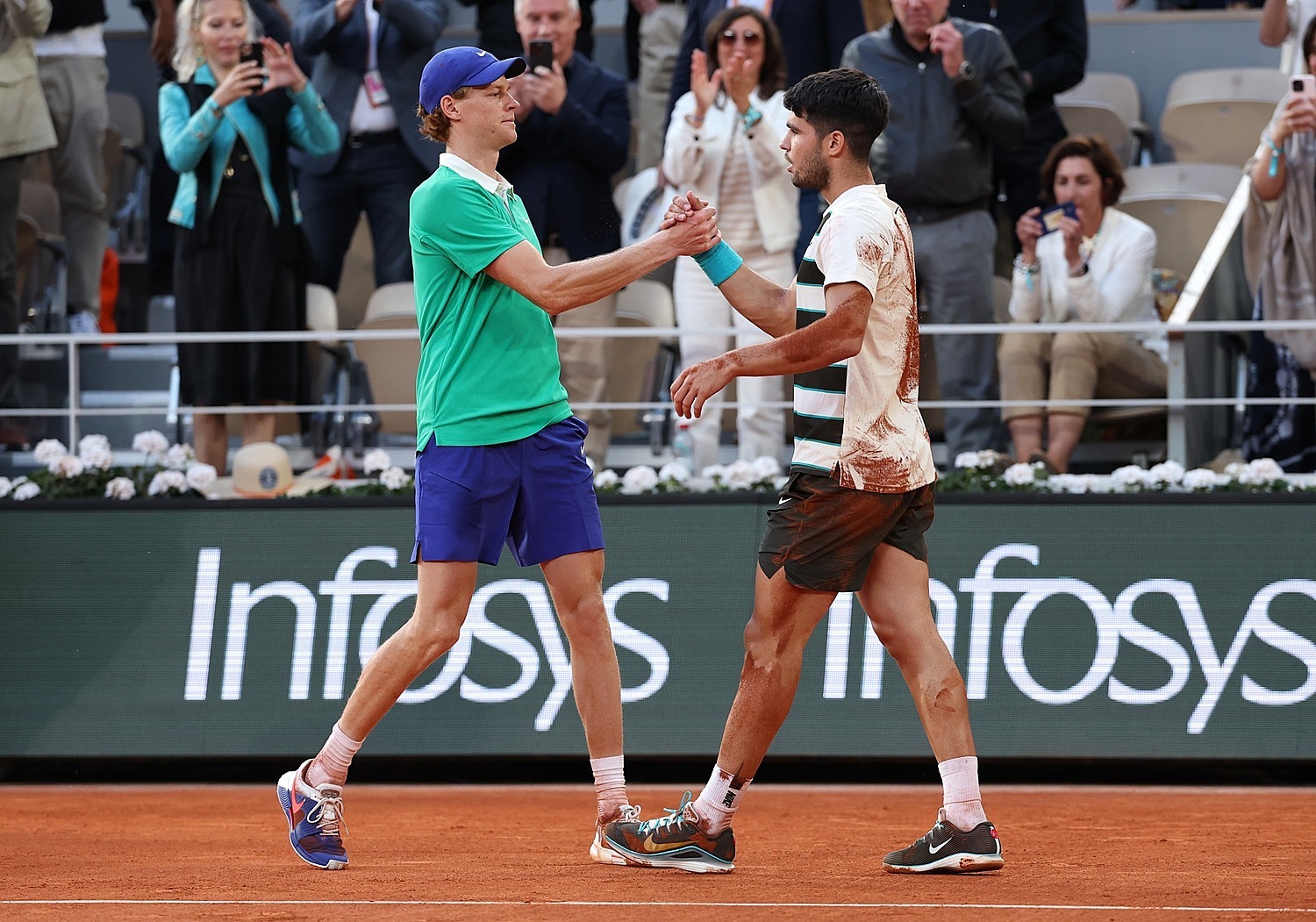 |
Sinner (left) congratulates Alcaraz, after the Roland Garros final, on Philippe Chatrier court, Paris, France on 8/6. Photo: Reuters |
Sinner (left) congratulates Alcaraz, after the Roland Garros final, on Philippe Chatrier court, Paris, France on 8/6. Photo: Reuters
Watching Alcaraz play is always more exciting and emotionally charged for fans. If Sinner's icy focus makes opponents tremble, Alcaraz isn't afraid to show his emotions on the court. This is both a strength and a weakness for Carlitos. On a good day, Alcaraz can create magic like at Roland Garros. But on an average day, a less energetic version of Alcaraz can prevail, as seen at Wimbledon.
What Alcaraz needs to improve, despite being well-rounded, is his ability to regain his form during difficult stages of a match, especially after one or two poor forehands. Djokovic is a role model in this aspect. Countless times when facing adversity against Nadal, Nole turned the tables by directly and aggressively attacking his opponent's forehand. This tactic not only reduced Nadal's opportunities for offensive play but also limited his ability to execute his signature spinning shots. The 2011 US Open final clearly demonstrated this.
Alcaraz also tried to adjust in the Wimbledon final, but it wasn't effective. Partly because Sinner played stubbornly and persistently with otherworldly accuracy, and partly because Alcaraz hadn't fully mastered his mental game. In the final service games, Alcaraz's eagerness to score quickly caused him to lose control, evident in his unstable ball toss. This is a typical sign of a player rushing and losing their rhythm, even if the deviation is very small.
Sinner appears more composed, but there are still things he wants to improve. These include his ability to come to the net or add more spin to his forehand. Also, Sinner's drop shot could be more effective and varied. Of course, these are elements where Sinner is already among the best, if not the best, but they are precisely what the Italian player will be working on until the US Open.
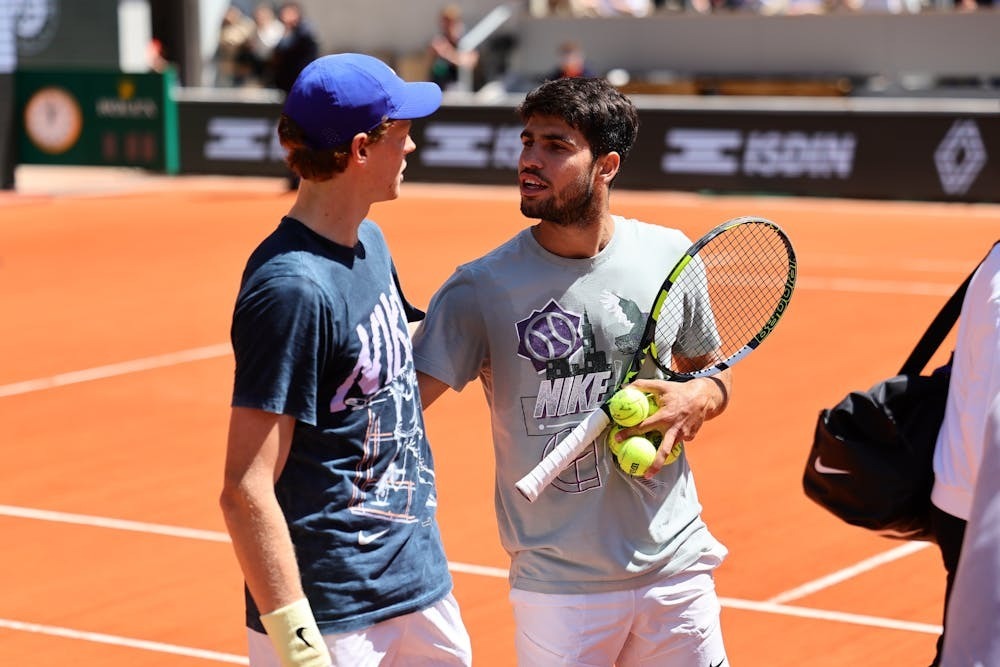 |
Alcaraz (right) and Sinner during a practice session at Roland Garros 2025 in Paris, France in May. Photo: Reuters |
Alcaraz (right) and Sinner during a practice session at Roland Garros 2025 in Paris, France in May. Photo: Reuters
Beyond pure skill, Sinner and Alcaraz will face more responsibilities, even temptations, off the court as their wealth and fame increase. This is also a test for both of them. With the Big 3, despite their different personalities, Federer, Nadal, and Djokovic were all masters of self-management and relationships, maintaining discipline and focus in their work, not just for a week or a month, but throughout their decades-long careers.
So far, Sinner and Alcaraz have shown themselves to be kind and decent young men. Through their public image and media interactions, both have expressed their passion for tennis, their affection for fans, and, importantly, their respect for their parents and families.
The only remaining active member of the Big 3 is nearing retirement, but tennis won't be as dull as many fear, because Sinner and Alcaraz continue to challenge each other relentlessly. And because continuing to strive for improvement even at the pinnacle of success is the foundation of the path to greatness.
Vy Anh



